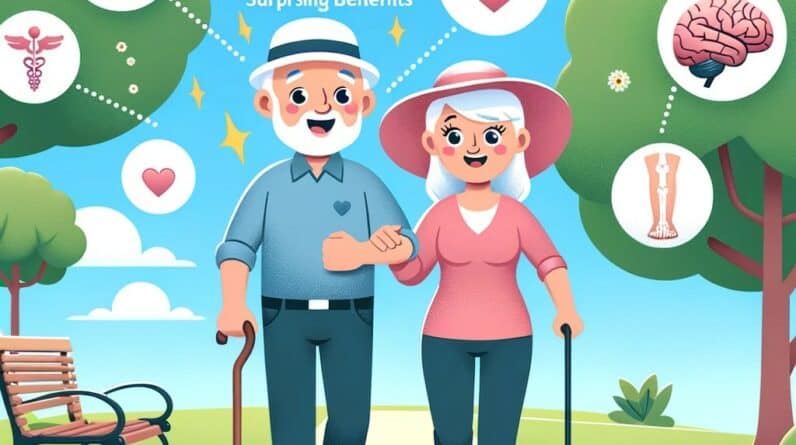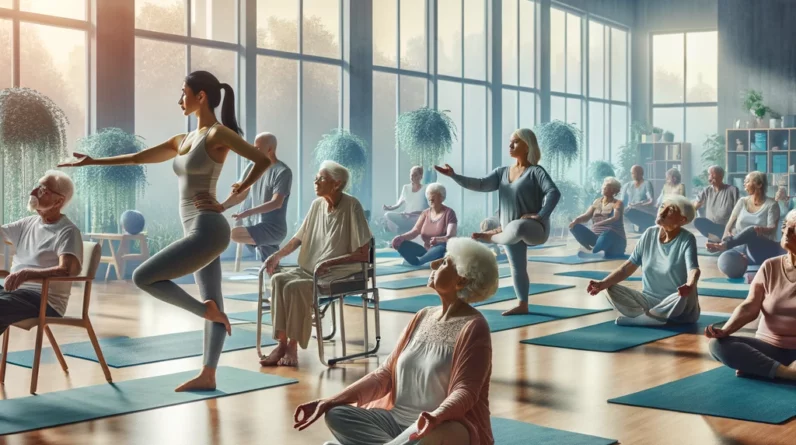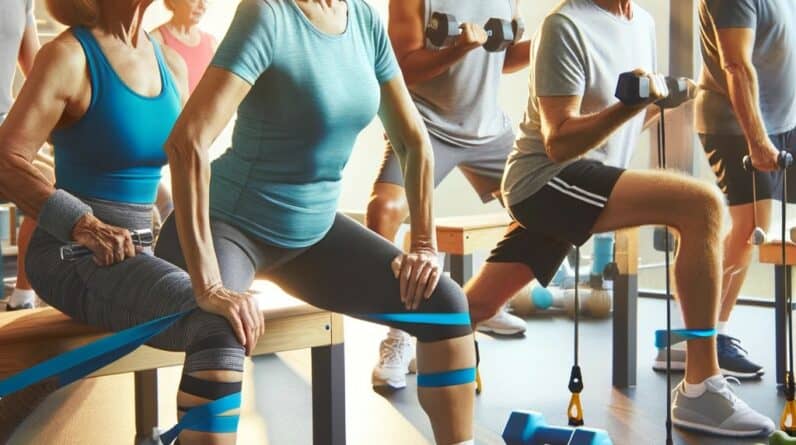
Dementia Discovery That is Leaving Doctors Speechless (Try This Tonight)
Better than Morphine For Joint Pain… Yet Safer Than Aspirin?
Retire With Freedom. Start Earning Extra Cash Today.
The Easiest Way To Burn Unwanted Fat.
Walking Exercise Program Workout – Why It Works
When you’re over fifty years old, walking is a great way to work out. And it doesn’t matter if you can’t walk very far or if you have trouble with your balance. There are ways to work around these problems that everyone can do and I’m going to tell you about them.
The best way to start a walking exercise program is by making small changes in your everyday routine. While you’re going about your day, try adding a walk whenever it’s convenient and easy for you to do. It can be a walk from your car to the office or just from the mailbox to the house.
Once you’re walking more often, it will become a habit and then you can start working out at home with resistance bands or even at work with things like cans of food in the back of the cabinet that only weigh a pound or so each.
Even if you’re limited to walking around your living room because of bad balance, you can still work out. Just add a few lower body and core exercises like squats, lunges, and planks to your walks. You can even do arm exercises by using the door frames for resistance on bicep curls or tricep extensions. This way you’ll have a full-body workout routine all in one place!
When it’s time to pick up the pace, add some hill walking or try jogging for a distance that’s comfortable for you. Another way to speed up your walks is to wear a weighted vest or backpack with relatively heavy items inside. These can be items that you use every day that you can easily carry, like your purse, briefcase, or backpack.
Walking Exercise Program Workout-Bend And Stretch After A Walk Workout
To maintain your walking exercise program once it’s been established, keep walking daily as part of your routine. If you can walk for 30 minutes five days a week, then do it. You’ll be happy when you see how much weight comes off and how many other health benefits result from this simple exercise activity. Studies show that working out with a goal to get stronger and leaner can help reduce the risk of cardiovascular disease and type 2 diabetes.
If you can’t walk far, start with a few minutes of walking a day at first. Even if you have to keep stopping and resting every few minutes, you’ll be surprised how much it will help your joints and the rest of your body too!
You may need to walk at a slower pace for some time before you’re able to increase your distance. Walk at a pace that is comfortable for you even when it’s after work or in the evening. Then as your strength increases over time, start increasing the speed or duration of your walks.
This will give you the strength and stamina you need to walk further and faster when you need to. The goal is to be able to walk as far as possible without your heart rate increases too much or if it reaches a certain point, then stop.
Since regular walking is the best exercise for burning calories, you can also try doing it with a friend or family member, which will help keep you motivated and committed. You’ll also learn about other things that are important in life along the way!
An easy way to add this joint-friendly cardio activity into your life is by walking with a friend or even at work when breaks are available and convenient. It’s also an easy way to get outside and enjoy the fresh air and maybe even have some fun.
Whether you’re walking at home, at the office, or around town, it’s a good idea to wear comfortable shoes that you can walk in comfortably for a while. They should be low-topped cross-trainers or sneakers with plenty of cushioning and support. Make sure there is plenty of room for your toes to wiggle and move freely without being cramped in the shoe.
Another important aspect of staying healthy with your walking exercise program is to drink plenty of water before, during, and after your walks. The human body is made up of 70 percent water and this is even more important if you’re over fifty years old. You want to make sure your body has enough water to keep moving the way it should and to help flush out harmful toxins that are stored in the tissues.
You can also add a few extra minutes of walking when you’re at home or at work if you wish by adding in some stretching exercises like toe touches, tricep stretches, leg swings, or arm circles to your routine. You can do these while standing and while sitting too.
Studies show that these stretches are just as effective as walking at burning calories and you can even do them sitting at your desk or in the car if traffic is heavy. This is a great way to get a little extra exercise and stretch at the same time.
If you have basic stretching exercises that you’ve learned over the years, then you can add those into your walking routine too. You can do them before or after your walk and these are helpful exercises for strengthening and toning muscles, improving your balance, and preventing injuries.
You might also consider skipping the stretches if they don’t work well for you. If it creates too much of a challenge in your daily life with other things that are important to do, then skip these. But if you can do them and your joints feel good afterward, then you have the option of doing them.
Doing a few minutes each day is better than not doing any, so at least get started. If you want to make it even more effective, then try to fit in some stretches into your routine.
Walking Exercise Program Workout – A Easy To Follow 7 Minute A Day Workout For People Over 50
Check out this easy-to-follow program below!!
Walking Exercise Program Workout-Your Heart Rate
When walking, you will feel your heart rate increase with the effort required in order to walk longer. Keep this in mind when you’re walking outside as this might also happen when you’re at home or at work. A man with a normal resting heart rate of 60 beats/minute is able to exercise for 30 minutes without his resting heart rate increasing that much.
Remember that your resting heart rate is what you see when you take your pulse. Your resting heart rate can vary greatly from day to day, so it’s important to keep track of this for a few days in order to get an accurate reading of how well your heart is working.
On average, walking exercises will increase the resting heart rate by 5-10 beats/minute. This will still be way below normal healthy levels for most people, so if you start to experience more than 10 beats/minute in the increase in heart rate after walking, then it’s time to slow down or sit down and rest.
If your resting heart rate increases to too high a level, then you can end up with shortness of breath, dizziness, chest pain, and even possibly some of the symptoms associated with having a heart attack. This is why it’s important to monitor your resting pulse as you exercise.
You can also use heart rate monitors to see what your resting pulse is and then compare this to the increase in heart rate after walking for several days in order to get an idea of how well your body is responding. You must be careful if there is any doubt about whether this increase in heart rate is normal or not for you. It’s better to see a doctor before starting any exercise program to ensure that you are healthy enough to walk at this pace.
To sum it up, if you want to walk in order to increase your heart rate, then you should try and do so with a good pattern of walking as the best way to get the most out of your workouts. Walking also has other benefits on the body which we have not mentioned here. It’s great for toning up your muscles and for improving balance and posture. If you plan on walking regularly for any fitness goal, then it’s important to remember that if you’re just starting out, you will feel tired at first. It will therefore be important to start with gradual improvements to your fitness level and increase your intensity slowly over time.
Disclaimer: The information in this article is intended for educational and entertainment purposes only and should not be used instead of or contrary to that of a medical professional. Before taking supplements, starting a new diet, or embarking on a new exercise regime please consult a medical or nutritional professional. The owners of “Getting Healthy After 50” are not medical professionals and are simply redistributing information that is freely available on the internet.








